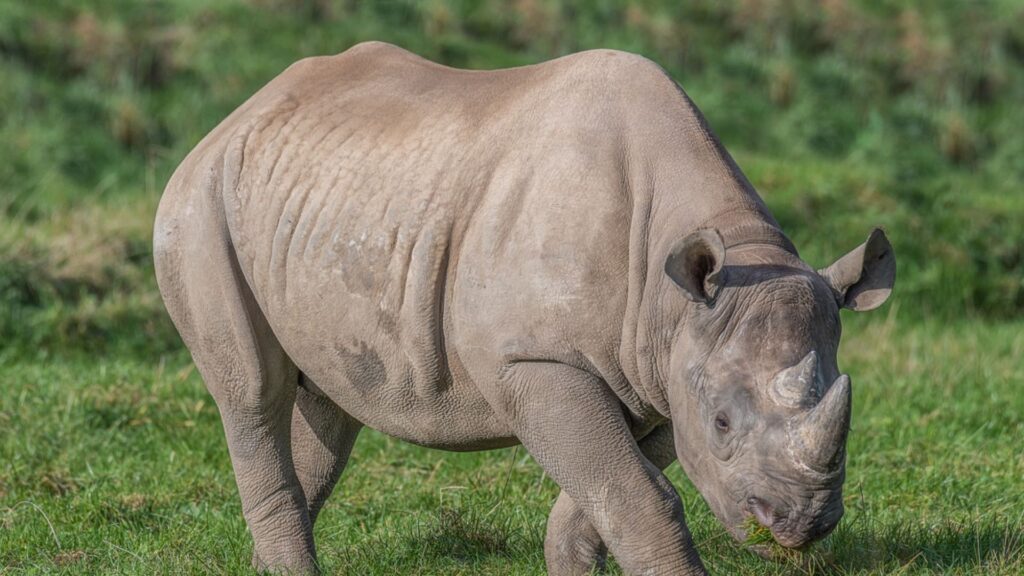English is a wild jungle of rules and the word “rhinoceros” is proof. If you’ve ever scratched your head wondering, “Is it rhinoceroses, rhinoceri, or just rhinoceros?” you’re not alone. Whether you’re a wildlife blogger, grammar nerd, or someone writing a school report on endangered species, this question pops up more than you’d think.
Let’s unpack it, using examples, clarity, and a few surprises along the way.
Simple Definition + Usage Overview

First, let’s clear the fog. The word “rhinoceros” refers to a large, thick-skinned herbivorous mammal in the family Rhinocerotidae, often found in Eastern and Southern Africa, and subtropical Asia. These horn-bearing creatures are commonly known for their intimidating horns and gentle eating habits.
Now, about that plural…
- The standard and most widely accepted plural of rhinoceros is rhinoceroses.
- Rhinoceri is an archaic, less common plural rooted in Latin-style pluralization.
- Rhinos is the informal abbreviation used conversationally and in wildlife media.
- Some mistakenly treat rhinoceros as both singular and plural (similar to deer or sheep) but that’s incorrect.
Clear Rules & Patterns
Let’s break this down by grammatical category:
🔸 Correct Forms
- ✅ rhinoceroses – Standard English plural
- ✅ rhinos – Informal, accepted
- ✅ rhinoceros – Singular noun
🔸 Rare but Seen
- ⚠️ rhinoceri – Rare, Latinized, mostly academic or stylistic
🔸 Incorrect Usage
- ❌ rhinoceroi – Not a valid word
Grammar tip: Rhinoceros is a countable noun, so it should follow standard pluralization rules, even if the word itself sounds exotic.
Multiple Example Sentences
Here are examples using all major forms in natural contexts:
- “We saw five rhinoceroses near the watering hole.”
- “The safari guide said the park protects over 30 rhinos.”
- “A rhinoceros can weigh up to 2,300 kg.”
- “Some textbooks incorrectly list rhinoceri but it’s not standard.”
- “Tourists reported seeing several rhinoceros grazing.” (Ambiguous and technically incorrect)
Scenario Example: Email to a Wildlife Tour Operator
Subject: Clarification on Rhinoceros Sightings
Hi Joanna,
Thanks again for organizing such a memorable safari!
Quick question—on the third day, our guide mentioned we spotted “several rhinoceros near the riverbank.” But I thought the plural was rhinoceroses? Just curious about the proper term.
Best regards,
Ethan Rivera
Reply:
Hi Ethan,
Great observation! You’re absolutely right the correct plural is rhinoceroses, though many people (even guides!) casually say “rhinoceros” as both singular and plural. It’s one of those animal names with a bit of plural confusion, like moose or sheep, even though rhinoceros is a countable noun and follows regular pluralization.
Thanks for pointing it out!
Warm wishes,
Joanna M.
Lead Wildlife Coordinator
Before/After Examples in Everyday and Formal Contexts
| Incorrect | Correct |
|---|---|
| “We saw three rhinoceros yesterday.” | “We saw three rhinoceroses yesterday.” |
| “The park is home to many rhinoceri.” | “The park is home to many rhinoceroses.” |
| “I love watching rhinoceroi documentaries.” | “I love watching rhinos on documentaries.” |
Bulleted Rules with Do’s and Don’ts
✅ Do:
- Use rhinoceroses in formal and academic contexts.
- Say rhinos in casual conversation or headlines.
- Treat rhinoceros as a countable singular noun.
❌ Don’t:
- Use rhinoceri in formal writing it’s rarely accepted.
- Treat rhinoceros like a mass noun (“many rhinoceros”).
- Invent forms like rhinoceroi they’re incorrect.
Common Mistakes & Fixes
Many grammar errors around this word stem from its exotic origin. While it may sound like Latin, English pluralization rules still apply:
❌ “We photographed a herd of rhinoceri.”
✅ “We photographed a herd of rhinoceroses.”
Or worse…
❌ “There were three rhinoceroi in the distance.”
✅ “There were three rhinos in the distance.”
Keyword + Intro Explanation

If you searched “what’s the plural of rhinoceros,” you’re not alone. This is a frequent grammar question, especially when people compare it to other animals with irregular plurals, such as:
- goose → geese
- mouse → mice
- sheep → sheep (no change)
But here’s the twist: rhinoceros doesn’t follow irregular animal plural rules. It plays by typical English patterns just add “-es”.
Quick Reference Table
| Singular | Plural (Standard) | Plural (Informal) | Rare/Obsolete Form |
|---|---|---|---|
| rhinoceros | rhinoceroses | rhinos | rhinoceri |
Fun Fact: Etymology of “Rhinoceros”

This heavy-duty word has a history:
- 🧠 From Greek: rhino- (nose) + keras (horn) = “nose-horned”
- 📜 Adopted into Latin as rhinoceros
- 🦏 Eventually entered Middle English unchanged
So, yes it sounds Latin. But in modern English? We pluralize it the standard way.
A Real-World Context: Wildlife Report Excerpt
“The Sumatran rhinoceroses, critically endangered, inhabit isolated areas of tropical forest in Indonesia. As of 2025, fewer than 80 individuals remain in the wild.”
This sentence uses the correct form and demonstrates subject-verb agreement with plural nouns. If it said “The Sumatran rhinoceros live…”, that would be a grammar mistake.
So… Is Rhinoceros Plural or Singular?
It depends on the form:
- Rhinoceros → singular
- Rhinoceroses → plural
- Rhinos → plural/informal
- Rhinoceri → plural (rare and mostly for style)
If you’re writing anything formal, always go with rhinoceroses.
Conclusion: Don’t Get Trampled by Grammar
The next time you write about this mighty mammal, remember:
- Stick to rhinoceroses if you want to be correct.
- Use rhinos if you’re writing casually.
- Avoid rhinoceri unless you’re quoting Shakespeare or being cheeky.
Language doesn’t have to be intimidating. Even the word rhinoceros, with all its horns and heft, obeys some surprisingly simple rules.

